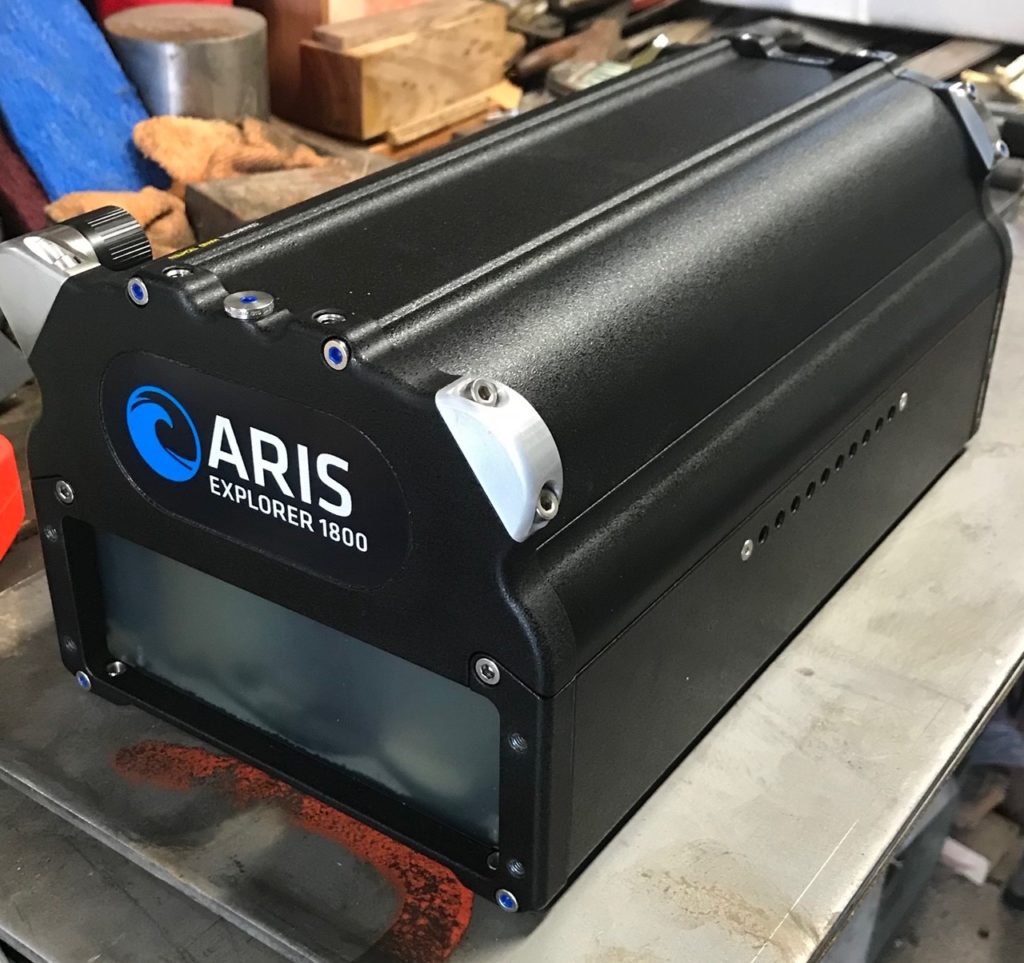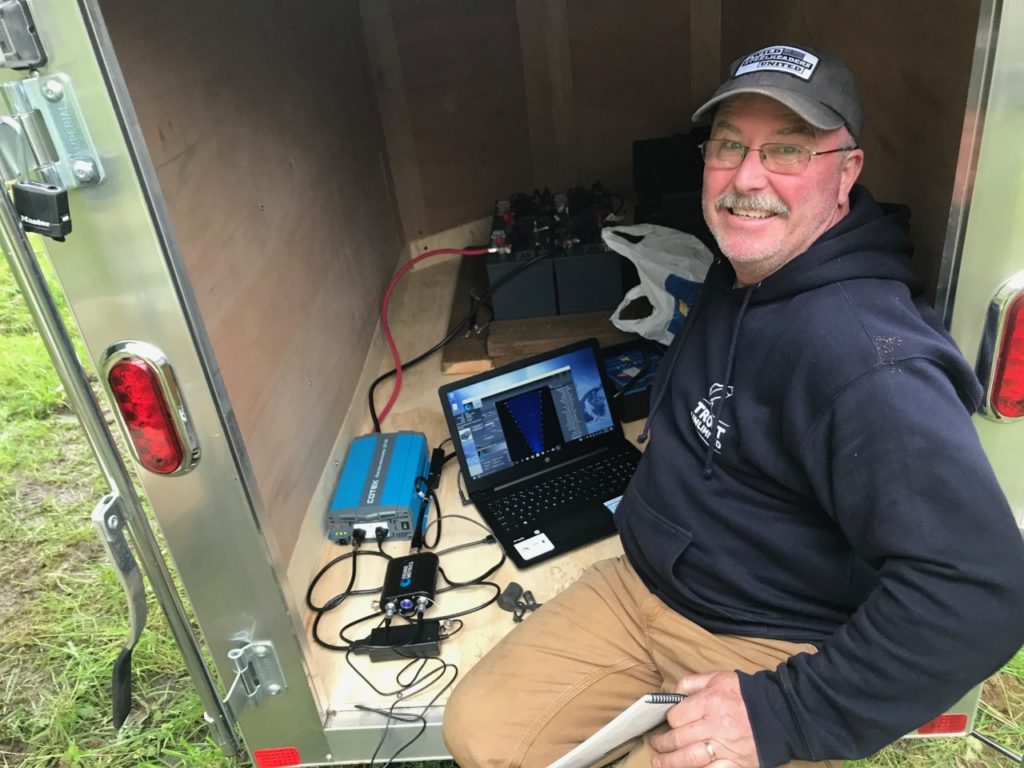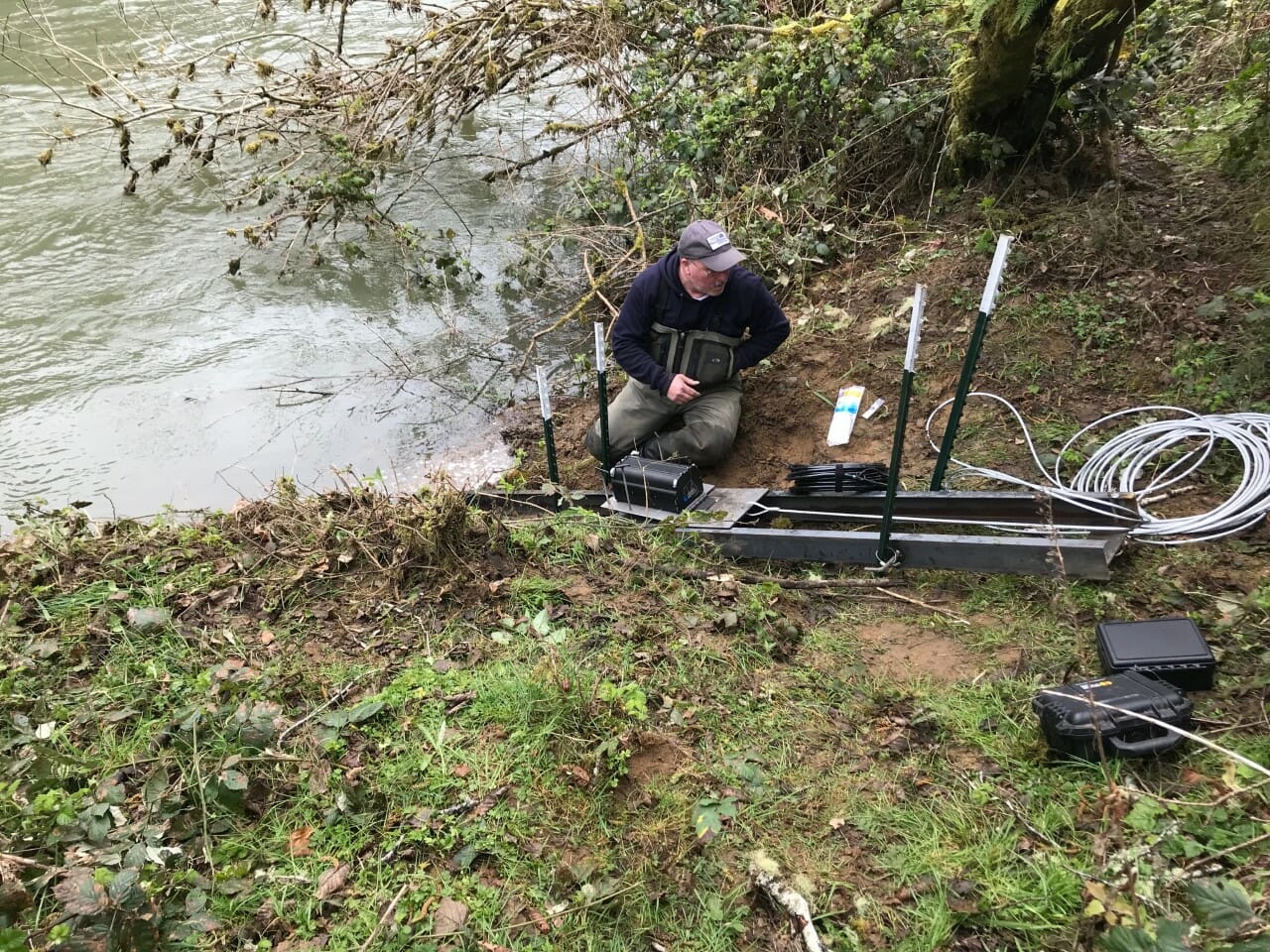Collecting salmon and steelhead population data through the outbreak
Trout Unlimited members can take comfort that, despite the dramatic upheaval in our human lives over the past few months, salmon and steelhead are unaffected by the coronavirus pandemic. Except, perhaps, by a big drop-off in angling pressure as many states close or restrict access to fishing areas
Nonetheless, state and federal agencies must continue to collect population data for salmon and steelhead, as those data sets drive fishery management decisions that can have far-reaching implications for both the fish and the anglers and guides who target them (under normal circumstances, anyway).
As resource management agencies along the West Coast have struggled to find ways to continue collecting population data for anadromous fish given travel restrictions and public health concerns, there’s one river in southwest Oregon where data continues to flow as freely as the salmon and steelhead swimming upstream to their natal spawning grounds — thanks to the vision and efforts of one TU staffer, in particular.
Dean Finnerty is the Pacific Northwest Director for Trout Unlimited’s Sportsmen’s Conservation Project and manages our Wild Steelhead Initiative. Following a 25-plus year career in law enforcement, where he often went undercover wearing a mullet and riding a Harley Davidson as a meth-buying member of an outlaw motorcycle gang, Finnerty turned to his lifelong passion for steelhead and conservation and found a second career with TU.
A few years ago, when one of his favorite homewaters was threatened by legislation introduced in the Senate that would have classified it as a forestry emphasis area, Finnerty took a hard look at why his special place deserved protection and what he could do to change the trajectory of the bill that could destroy his steelhead Shangri-La.
Using sonar to count fish
In searching for ways to build the case for permanent protection for his beloved homewaters, Finnerty learned about DIDSON sonar technology being used in California’s Smith River. At the same time, through a perfect confluence of events, Finnerty began serving on the BLM’s Coastal Oregon Resource Advisory Council, where he learned of a way to fund a similar monitoring effort closer to home.

Finnerty successfully acquired $57,000 to support a sonar fish monitoring project for his favorite river.
Soon after, a fishing trip with a Wild Steelheaders United and Trout Unlimited supporter yielded a $60,000 gift toward the project. Then, through a bit of “redneck engineering ability” to weld the DIY infrastructure needed to deploy the sonar unit in turbid coastal waters, some negotiation with vendors and relationship building with local landowners, Finnerty was able to bridge the remaining project costs and logistics with sheer grit and determination. A DIDSON sonar unit was installed on one of Dean’s favorite salmon and steelhead streams during the 2018 winter steelhead season.
Now in its third year of operation, TU’s sonar unit on this coastal stream (that shall remain unnamed in order to protect the river’s fragile fish runs) has collected a wealth of information that has major implications for fisheries management, both in the local stream in which the unit is deployed and across the entire Oregon Coast. Students in Oregon State University’s Fisheries Department analyze the sonar data and provide TU with regular updates on the number of salmon, steelhead, lamprey, striped bass and other species that swim by the sonar array each season.
How does it work?
The unit captures digital video imagery using soundwaves and records it via a laptop computer and external hard drives. These hard drives will record several months’ worth of data, that can then be removed from the site and reviewed in the comfort of home or office. The recorded digital imagery of “targets” moving through the array allows staff and volunteers to capture extremely accurate fork length measurements, target distance from the camera, as well as the date and time the target passed the site.
Swim movements and body morphology aid in making species identification. To date, the project has counted over 12,000 chinook and coho salmon, close to 5,000 winter steelhead, as well as striped bass, out-migrating salmonids, pacific lamprey and shad. A noteworthy observation from this work that may interest winter steelhead anglers is the time of day most winter steelhead make their upstream migration. The vast majority of these fish travel during the dead of night, from 11 p.m. until around 3 a.m.

Such robust data has revolutionary potential for management of anadromous species. Traditional methods for estimating salmon and steelhead populations rely on redd (or nest) counts that can at best serve as a rough estimate for overall populations. Redds must be surveyed by teams of agency staff or volunteers, hiking and wading through overgrown coastal rainforests, often in rough and wet terrain. Redd surveys become impossible during storm events when river levels spike and water color turns to chocolate milk. In contrast, sonar systems work regardless of water clarity and provide counts down to the individual fish with extremely low margins of error.
While most of us attempt to maintain sanity during these tough times with Netflix and jigsaw puzzles, Dean Finnerty and students at Oregon State University are hard at work in their living rooms and home offices — quite possibly in their steelhead pajamas — analyzing the data still being collected by Dean’s sonar unit. Their work ensures that the current public health crisis doesn’t impair our ability to manage salmon and steelhead populations sustainably and is essentially building out a new paradigm for managing anadromous species in the future.
Kyle Smith is TU’s Oregon field coordinator.


